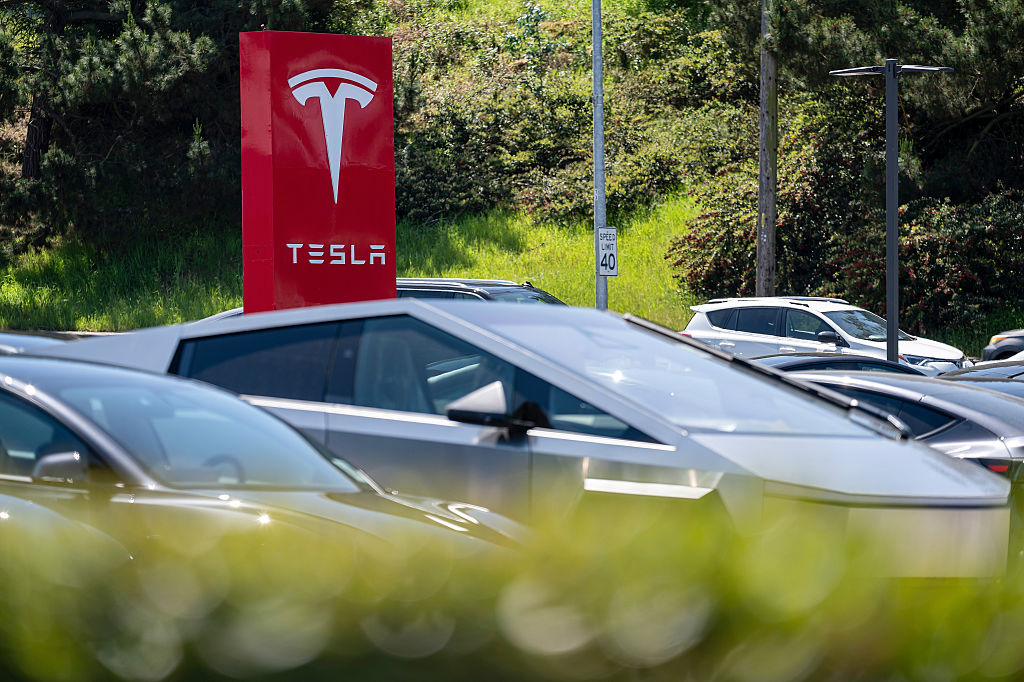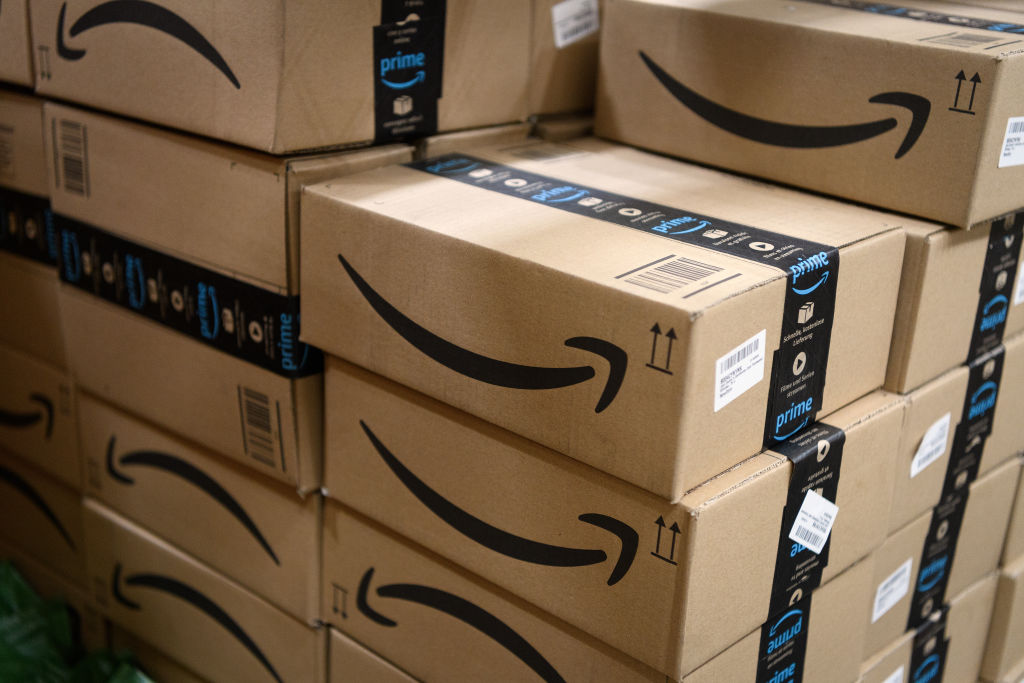12 Stocks to Buy No Matter Who the Next President Is
The U.S.'s long-neglected infrastructure is set to get a spending boost, and these stocks stand to benefit.

In the year after a presidential election, the stock market typically delivers subpar results. As Kiplinger’s Anne Kates Smith pointed out earlier this year, since 1833, U.S. stocks have returned an average of just 2.5% in the first year of a president’s term, 4.2% in the second, 10.4% in the third, and 6% in an election year. But don’t sell your stocks now with a plan to buy them back in January 2019. After all, Standard & Poor’s 500-stock index returned 26.5% in 2009 and 32.4% in 2013. The average historical results may be just a fluke.
But boosting economic growth will be a top priority of the new president, whoever wins the election. Hillary Clinton and Donald Trump differ in some ways on how to get the job done. For example, Clinton wants to slap a tax surcharge of 4% on Americans who make more than $5 million a year; Trump wants to cut the top marginal federal tax rate from 39.6% to 33%. But on other policies, they are much closer
Infrastructure. Trump wants a “trillion-dollar rebuilding program” for the nation’s highways, bridges, airports and power grid. Clinton says she’ll spend $575 billion on infrastructure over five years. This spending is on top of the five-year, $305 billion highway bill that was signed into law last year.

Sign up for Kiplinger’s Free E-Newsletters
Profit and prosper with the best of expert advice on investing, taxes, retirement, personal finance and more - straight to your e-mail.
Profit and prosper with the best of expert advice - straight to your e-mail.
Globalization. Both Trump and Clinton have loudly opposed the Trans-Pacific Partnership, an agreement to open up trade in Asia. Trump, who has threatened high tariffs against China, espouses trade policies closer to those of the left wing of the Democratic Party than those of the Republican Party. Clinton, despite her history as a free-trade advocate, has shifted toward a more protectionist stance as well.
Debt and fiscal policy. The Committee for a Responsible Federal Budget estimates that Trump’s fiscal policies would raise the proportion of debt to gross domestic product over 10 years from 74% at the end of 2015 to 129%; it projects that Clinton’s policies would raise the figure to 86%. But the key is that neither candidate has made debt reduction a priority.
Winning stocks and funds
It’s easy to conclude that winners under the new administration will be stocks of companies that build infrastructure and benefit from it, and companies that gain from reduced foreign competition.
Many of the biggest U.S. infrastructure companies have vast operations abroad and won’t benefit much from higher domestic spending. Caterpillar (CAT), for instance, gets 17% of its profits from construction in North America. By contrast, Vulcan Materials (VMC), a much smaller firm that makes the concrete and asphalt that go into roads and bridges, has operations only in the U.S., Mexico and the Bahamas. Vulcan’s stock, which has more than quadrupled since September 2011, isn’t cheap. Still, the stock should benefit from a ramp-up in infrastructure spending. (All returns are through August 31.)
Quanta Services (PWR), which builds and repairs electric power, energy and telecommunications infrastructure in the U.S. and Canada, will also benefit. Quanta shares have risen by 49% since February 11 of this year, which is when the stock price began a significant upward move. But the stock is still far below its peak, and the price-earnings ratio, based on estimated profits over the next 12 months, is just 13, compared with 17 for the S&P 500.
Also consider Granite Construction (GVA), which engages in heavy-construction projects. Recent contracts include awards for paving an airfield in Kentucky, rebuilding a bridge in Chicago and constructing a Marine training facility at Camp Pendleton, in California. Granite’s backlog of projects under contract for future work (in dollar terms) was a record $3.8 billion on June 30. The stock has soared 65% since October 2015, but it remains 30% below its 2007 high.
Then there are companies that don’t build infrastructure but benefit from it. Macquarie Infrastructure (MIC) provides a wide variety of services—such as fuel storage and private-terminal operations—that will gain from expansion and renovation of airports and seaports. Macquarie shares are volatile and expensive, but they pay a generous dividend, which the company has raised 11 quarters in a row. The stock currently yields 6.3%. Other beneficiaries of better infrastructure are delivery companies, such as FedEx (FDX) and United Parcel Service (UPS) (though both have extensive international operations), and truckers, such as JB Hunt Transport Services (JBHT) and Old Dominion Freight Line (ODFL). Another winner: Amazon.com (AMZN), which will get faster package delivery.
It’s a shame none of the dozens of mutual and exchange-traded funds that specialize in infrastructure stocks focus solely on U.S. firms. The best bet is iShares Global Infrastructure ETF (IGF), which devotes 39% of its assets to U.S. stocks, with an emphasis on the transportation of energy.
Steel companies will benefit not just from infrastructure spending but from a tougher stand against Chinese imports. Nucor (NUE), the pioneer in efficient mini-mill manufacturing and now the largest U.S.-based steel company, has had to contend with a glut of the metal from China that has depressed prices. So has United States Steel (X), a smaller company that still enjoys good sales of such products as pipes and auto parts. Analysts see the firm losing money this year, but on average they expect profits of $1.70 per share in 2017. Nucor is the financially stronger company, but U.S. Steel’s shares probably have more appreciation potential if steel prices rise.
It’s harder than you might think to find other big winners if imports to the U.S. are restricted. Take toys, the fourth-largest category of Chinese imports to the U.S. Hasbro (HAS), a large U.S. toy company, has heavily relied on Chinese manufacturing for its products, but it has been using plants in Cambodia, India and Vietnam, where costs are lower. If tariff barriers against Asian goods were suddenly increased, the result would be higher toy prices, not a boom in U.S. toy production, because our manufacturing costs would still be too high.
Still, it’s doubtful that even Donald Trump will be able to turn back the tide of globalization because the damage to the U.S. economy would be too great. More likely, the most important economic change that will arrive with any new administration is the passing of the “policy baton … from monetary to fiscal stimulus,” as Michael Hartnett, chief strategist of Bank of America Merrill Lynch, wrote recently. In other words, the U.S. government is going to be spending more. History shows that the big gainers after a spike in federal spending are industrial and energy companies. Utilities tend to be losers, mainly because interest rates rise as the economy heats up and demand for loans increases.
Higher deficits from higher spending may be a drag on the economy long term, but over the next few years, fiscal stimulus can’t help but boost corporate revenues and profits. So the best investment to benefit from a new presidential administration may be the simplest: Buy the U.S. stock market as a whole, through a mutual fund such as Vanguard 500 Index (VFIAX), which mimics the S&P 500 and charges annual expenses of just 0.05%. Or consider a great managed fund, such as Dodge & Cox Stock (DODGX), with an expense ratio of 0.52%, or Fidelity Contrafund (FCNTX), which charges 0.70%.
Am I worried about that lousy 2.5% average return for the first year of a presidential term? Not a bit.
James K. Glassman, a visiting fellow at the American Enterprise Institute, is the author, most recently, of Safety Net: The Strategy for De-Risking Your Investments in a Time of Turbulence. He owns shares of Amazon.com.
Get Kiplinger Today newsletter — free
Profit and prosper with the best of Kiplinger's advice on investing, taxes, retirement, personal finance and much more. Delivered daily. Enter your email in the box and click Sign Me Up.

-
 Tesla Stock Pops as Elon Musk Promises DOGE Draw Back
Tesla Stock Pops as Elon Musk Promises DOGE Draw BackTesla reported a sharp drop in first-quarter earnings and sales, as the EV maker suffered a backlash to its CEO's political ambitions.
By Karee Venema
-
 Easing the Challenges of Caring for Aging Parents
Easing the Challenges of Caring for Aging ParentsHere are some strategies that can help reduce the effort and stress involved.
By Mario Hernandez
-
 Stock Market Today: Dow Drops 971 Points as Powell Pressure Ramps Up
Stock Market Today: Dow Drops 971 Points as Powell Pressure Ramps UpPresident Trump is increasing his attacks against Jerome Powell, insisting the Fed chair cut interest rates.
By Karee Venema
-
 The Stock Market Is Selling Off. Here's What Investors Should Do
The Stock Market Is Selling Off. Here's What Investors Should DoInvestors started fleeing the equities market en masse in response to the Trump administration's "jaw-dropping" tariffs. But the experts say don't panic.
By Karee Venema
-
 Stock Market Today: Markets Celebrate Trump's Tariff Détente
Stock Market Today: Markets Celebrate Trump's Tariff DétenteConsumer discretionary stocks led 10 of the 11 S&P 500 sector groups well into the green.
By David Dittman
-
 Stock Market Today: Stocks Skid Into Another Risk-Off Turn
Stock Market Today: Stocks Skid Into Another Risk-Off TurnThe promise of the AI revolution can't overcome flickering hopes for a "Fed put."
By David Dittman
-
 How Amazon Stock Became a Member of the 100,000% Return Club
How Amazon Stock Became a Member of the 100,000% Return ClubAmazon's wide moat is one reason it has generated a 100,000%-plus return for investors over the long haul.
By Louis Navellier
-
 Stock Market Today: Stocks Pop on Time-Delayed Tariffs
Stock Market Today: Stocks Pop on Time-Delayed TariffsAll three major U.S. equity indexes rallied to intraday highs following President Trump's latest trade moves.
By David Dittman
-
 Stock Market Today: Stocks Swing Lower as Inflation Fears Rise
Stock Market Today: Stocks Swing Lower as Inflation Fears RiseThe latest consumer sentiment data showed near-term inflation expectations rose to their highest level since November 2023.
By Karee Venema
-
 Amazon Is the Worst Dow Stock After Earnings. Here's Why
Amazon Is the Worst Dow Stock After Earnings. Here's WhyAmazon stock is at the bottom of the Dow Friday as the e-commerce giant's soft outlook offsets a fourth-quarter beat. This is what you need to know.
By Joey Solitro